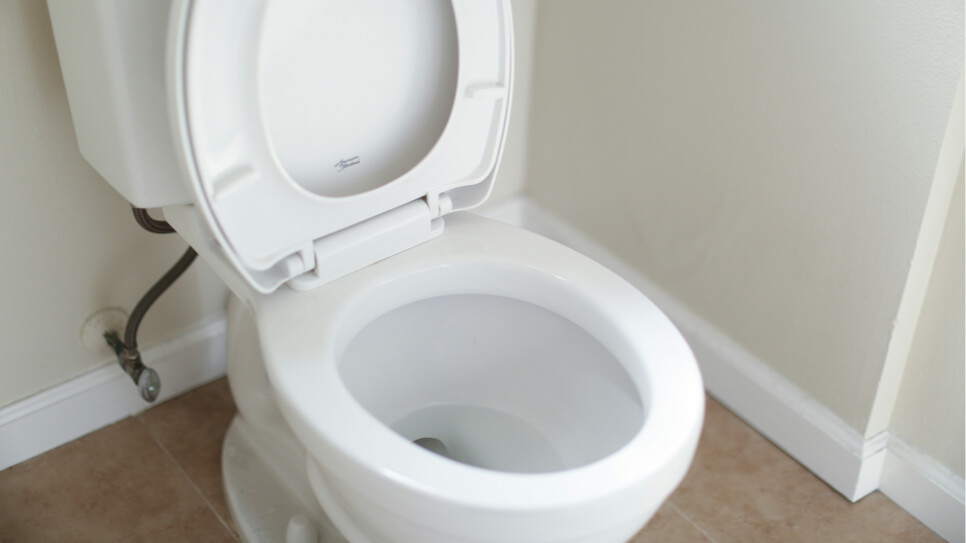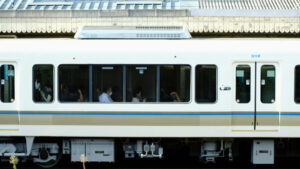Japanese toilets are known worldwide for their top-class cleanliness and comfort. From traditional squat toilets to the latest advanced bidet seats (known as “washlets”), a variety of types and sophisticated functions coexist. Moreover, Japan’s unique manners and spirit of hospitality support its toilet culture, which is highly appreciated by foreign visitors. This article provides a detailed explanation of the types and facilities of Japanese toilets, the efforts made to maintain cleanliness, and important usage tips. It offers an easy-to-understand introduction to the basic knowledge and culture of toilets that you should know before visiting Japan.
Contents
Basic Knowledge of Japanese Toilets
Types of Japanese Toilets
Western-style Toilets
The most commonly used type of toilet in Japan is the Western-style toilet. This is a sitting-type toilet where you sit directly on the toilet seat. Western-style toilets are installed in almost all places, including hotels, train stations, commercial facilities, and homes. The usage is simple: after sitting on the seat and finishing your business, you flush the water by using a lever or button. Western-style toilets are especially familiar and comfortable for foreigners to use.
Squat Toilets
Squat toilets are traditional Japanese toilets where users squat on the floor to relieve themselves. They are mainly found in older public buildings, rural train stations, and parks. Although their usage has decreased in modern times, some people still consider them superior in terms of hygiene. For foreigners using squat toilets for the first time, the posture may feel difficult, so explanations and precautions on how to use them are often necessary.
Washlet (Bidet Toilet Seat)
The Washlet, a bidet toilet seat, is an advanced toilet facility that is very popular in Japan. It has a function that sprays warm water to clean the bottom and bidet areas. The water temperature, pressure, and spray position can be adjusted with buttons, providing both cleanliness and comfort. Additionally, many convenient features such as seat temperature control, deodorizing functions, and automatic lid opening and closing are included. This feature is one of the most popular among Japanese toilets and is highly praised by foreign tourists as well.
Cleanliness and Etiquette in Toilets
Frequency of Cleaning and Hygiene Management
Japanese toilets are known worldwide for being extremely clean. In public and commercial facilities, cleaning staff frequently inspect and thoroughly clean and disinfect the toilets. In many places, cleaning is carried out every few hours or even hourly, ensuring that hygiene is consistently maintained. Additionally, toilet paper is regularly replenished, and soap is always available at handwashing stations, allowing users to feel comfortable when using the facilities.
Usage Etiquette
In Japan, there is a culture of being mindful of sounds. To mask noises made during or after using the toilet, a device called “Otohime” is often installed. This device plays water or nature sounds to cover up any noises, helping to maintain privacy.
Public Toilet Manners
When using public toilets, it is important to observe manners so that all users can have a comfortable experience. Avoid occupying the toilet for extended periods and wait your turn politely. Loud conversations and mobile phone calls inside the toilet are generally discouraged. These manners help support the cleanliness and comfort of Japan’s toilet environment.
Toilet Equipment and Functions
Automatic Lid Opening/Closing and Automatic Flushing
In recent years, Japanese toilets have been equipped with features such as automatic lid opening and closing, as well as automatic flushing after use. These functions allow users to operate the toilet comfortably and hygienically without touching surfaces. Such toilets are commonly found in public facilities, hotels, and high-end residences, and are highly valued by those who prioritize hygiene. These features also contribute to energy saving and water conservation.
Seat Temperature Adjustment
To ensure comfort even during the cold winter months, many Japanese toilets have adjustable seat temperature functions. The temperature can be set at several levels, allowing users to choose their preferred warmth. This helps reduce the discomfort of sitting on a cold seat and provides a comfortable experience. It is especially considerate for elderly people and children.
Deodorizing Function
Many Japanese toilets are equipped with powerful deodorizing functions that quickly eliminate unpleasant odors during and after use. These deodorizing features are built into the inside of the toilet bowl or around the seat and may operate continuously to keep the air fresh. Thanks to this function, both public and home toilets maintain a comfortable environment for users.
Japanese Toilet Culture and History
The Evolution History of Toilets
The Form of Traditional Squat Toilets
In old Japan, squat toilets were mainly used. This style involves squatting over a toilet bowl installed on the floor, which was often a simple structure made of holes and grooves, primarily constructed from earth or stone. Many traditional squat toilets were not flush toilets and depended on natural environments, but they developed into designs that considered hygiene and ease of use. Even today, squat toilets remain in rural areas and older buildings.
The Background of Western-style Toilet Adoption
Since the Meiji era, Western culture influenced Japan, leading to the gradual introduction of Western-style toilets. These toilets are used by sitting and became widespread particularly in urban hotels and public facilities. During the period of rapid economic growth, the adoption of Western-style toilets accelerated alongside rising living standards, and nowadays, they are standard in most newly built homes and facilities. The spread of Western-style toilets reflects changes in Japanese lifestyles.
The Birth and Spread of the Warm-water Washing Toilet Seat (Washlet)
The warm-water washing toilet seat, commonly known as the “Washlet,” was developed in Japan during the 1980s and revolutionized toilet culture. Initially, it was a costly product, but its comfort and hygienic benefits gradually led to widespread adoption. Today, many households and public facilities are equipped with Washlets, making it an iconic symbol of Japanese toilets. It is also well received by international visitors and is recognized worldwide as a unique Japanese technology.
Toilets and Japanese Hygiene Concepts
The Background of a Cleanliness-loving Culture
Japanese people have long valued cleanliness as an important cultural aspect. Influenced by Shintoism and Buddhism, purifying the body and living spaces has been considered a form of spiritual cleansing. Therefore, maintaining cleanliness in daily life is highly emphasized, and toilets are no exception. Keeping toilets clean is widely recognized as an expression of care and respect for oneself and others around.
High Awareness of Public Hygiene
Japan has a very strong awareness of improving public hygiene, and governments and local authorities have actively worked to improve sanitary environments. The installation of clean toilets and proper wastewater treatment are considered essential to protect public health. Especially in urban public facilities and transportation systems, cleaning and management are thoroughly maintained so that users can feel safe and comfortable.
Education on Toilet Cleaning
In Japanese schools, toilet cleaning is incorporated as part of education. Students clean the toilets they use themselves, fostering hygiene awareness, cooperation, and a sense of responsibility. This practice offers an experiential opportunity to understand the importance of maintaining a clean environment and lays the foundation for manners and public-mindedness in social life. Such education is a major factor supporting the cleanliness of Japan’s toilet culture.
Toilets and Hospitality
Well-equipped Toilets at Stations and Facilities
Major train stations and public facilities in Japan are equipped with comfortable and clean toilets. Many stations offer not only gender-segregated toilets but also multipurpose toilets and toilets with baby changing tables, catering to the diverse needs of users. Toilet facilities are regularly renovated to ensure users can enjoy a comfortable experience. Especially in large city stations, signage has been multilingualized, creating an environment where anyone can easily use the toilets.
Considerations for Foreign Tourists
To accommodate the increasing number of foreign tourists, many Japanese toilets now feature multilingual signs and usage instructions. Illustrated guides explaining how to operate washlets are provided to help first-time users. Additionally, the installation of multipurpose toilets and barrier-free designs has progressed, creating a friendly environment for elderly people, people with disabilities, and foreign tourists with children.
Comfort Through the Use of Latest Technology
Japanese toilets actively incorporate the latest technology to enhance user comfort. Examples include sensor-operated toilets that open and flush without contact, and features that can be controlled via smartphones. The use of cleaning robots, antibacterial materials, and air purification systems helps maintain a clean and safe space at all times. These advanced initiatives embody Japan’s unique spirit of hospitality.
Guide to Using Japanese Toilets
Entering and Preparing for the Toilet
Understanding Toilet Signs (Men, Women, Multipurpose, etc.)
At the entrance of Japanese toilets, signs indicate gender separation. Men’s toilets are often marked with blue or navy symbols, while women’s toilets use red or pink symbols. Multipurpose toilets usually display a wheelchair mark or the word “Multipurpose,” and they are designed to be used by people with disabilities, parents with children, or anyone needing assistance. Recently, gender-neutral toilets have also become more common, so it is important to carefully check the signs before entering.
Is It Okay to Enter Wearing Shoes?
In Japan, it is generally acceptable to enter toilets wearing your shoes. While some private homes may have a habit of changing into slippers, public and commercial facility toilets can be used with shoes on. However, some facilities provide toilet-specific slippers; in such cases, please change into them before entering. When using slippers, it is customary to leave them inside the toilet area after use and not to wear them outside again.
How to Use a Washlet
Basic Operation
The washlet is operated using a control panel located beside the toilet seat or on the wall. After finishing, press the “Rear Wash” or “Bidet” button to spray warm water and begin cleaning. Water pressure and temperature can be adjusted using buttons or dials to suit your comfort. After use, press the “Stop” button to end the washing, and lightly pat dry with toilet paper for cleanliness.
Convenient Features (Rear Wash, Bidet, etc.)
Washlets mainly offer two washing modes: “Rear Wash,” used by both men and women, and “Bidet,” designed for washing the female delicate area. Some models allow you to adjust the nozzle position, use massage washing, and switch water flow patterns. Many also come equipped with heated seats and drying functions for added comfort.
Precautions (Sound and Temperature Settings)
When using a washlet, be mindful of sound and temperature settings. High water or seat temperatures may irritate the skin, so it’s best to start with lower settings if you are a first-time user. In Japanese culture, where users are conscious of sounds, devices like “Otohime” that play masking noises are often installed. If no such device is available, please avoid talking loudly or using mobile phones in the restroom to respect others.
Troubleshooting in the Toilet
What to Do When There Is No Toilet Paper
Toilet paper is usually provided in Japanese toilets, but occasionally it may run out before being restocked. In such cases, you can contact nearby staff or the management office for assistance. It is also recommended to carry portable flushable tissues. In public facilities and train station toilets, staff often patrol regularly, so do not hesitate to ask for help if you encounter any issues.
When You Don’t Know How to Use a Squat Toilet
Squat toilets require users to squat over the toilet, which can feel difficult for first-timers. When using one, place your feet in front of the toilet bowl and squat down carefully while maintaining your balance. Since the floor may be slippery, move slowly and cautiously. If unsure, refer to nearby instructions or illustrations, or ask someone nearby for guidance. If you find squat toilets uncomfortable, it is advisable to look for a nearby Western-style toilet.
Who to Contact If the Toilet Is Clogged
If the toilet becomes clogged, do not attempt to fix it yourself. Immediately contact facility staff or the management office. Many public toilets have contact numbers or intercoms for reporting such problems. Quick reporting is important to prevent inconvenience to others. In private homes, it is common to call a plumbing service to resolve clogging issues.
Free Toilet Facilities at Stations and Tourist Spots
Features and Usage of Station Toilets
Major train stations in Japan are equipped with many clean toilets that users can use free of charge. Station toilets are spacious and include both Western-style and squat toilets, along with multipurpose toilets. Signage is clear and often multilingual, making it easy for first-time visitors to Japan to use them without confusion. It is considered good manners to wait your turn and keep the toilets clean during use.
Innovations in Tourist Area Toilets
In popular tourist destinations, toilets are considered important facilities that significantly impact visitor comfort, and thus many improvements have been made. For example, cleaning staff frequently patrol to maintain cleanliness at all times. Some toilets feature designs that blend with the surrounding scenery or incorporate local characteristics. Furthermore, many toilets are equipped with multilingual usage instructions, baby chairs, and wheelchair-accessible facilities to meet a wide range of needs.
Toilet Measures for Disaster Situations
Japan is prone to natural disasters such as earthquakes and typhoons, so toilet measures during disasters are taken very seriously. Many public facilities and evacuation centers are equipped with emergency toilets, including simple toilets that can be used even when water is unavailable. Additionally, since public toilets may become difficult to use during disasters, the use and distribution of portable toilets are promoted. It is recommended to check toilet locations and usage methods in advance to prepare for emergencies.
Multipurpose and Barrier-Free Toilets
Facilities in Multipurpose Toilets
Multipurpose toilets are equipped to accommodate a wide range of users, including wheelchair users, elderly people, families with young children, and those who require assistance due to illness or injury. These toilets offer spacious areas, handrails, baby changing beds, and ostomate-friendly facilities (for care of artificial anus or bladder). Multipurpose toilets are commonly found in public facilities, large commercial complexes, and train stations, aiming to provide a safe and comfortable experience for all users.
Accessibility for Wheelchairs and Strollers
Multipurpose toilets feature wide entrances and no-step designs to allow smooth access for wheelchair users. They also have sufficient space for users pushing strollers. Many toilets include handrails and adjustable-height sinks, as well as other features that reduce the burden on users, creating an environment that is comfortable and easy to use. This enables people with disabilities and parents with young children to use toilets安心して外出先でも安心してトイレを利用できます。
Considerations for Foreigners and the Elderly
Many multipurpose toilets include multilingual signs and instructions to make them accessible for foreign tourists. Additionally, some are equipped with audio guides and braille for visually and hearing-impaired users. Efforts are also made to enhance comfort and safety through the use of slip-resistant flooring and heated toilet seats for elderly users. These thoughtful accommodations contribute to creating a society where diverse people can use toilets comfortably.
Noise Issues and Consideration Culture in Toilets
What is “Otohime” (Sound Masking Device)?
“Otohime” is a device commonly found in Japanese toilets designed to mask sounds. It produces flowing water or natural sounds to cover noises such as flushing or other sounds during use, primarily installed in women’s restrooms. This helps reduce the sound reaching surrounding areas, protecting the privacy of users. Otohime represents a unique aspect of Japanese culture, symbolizing cleanliness and thoughtful consideration.
Privacy-Focused Culture
Japanese toilet culture places great emphasis on privacy. Toilet stalls and doors are designed with minimal gaps to prevent sound and sight from leaking. Many toilets are equipped with individual ventilation and deodorizing functions to create a comfortable environment. These considerations help users feel secure and at ease while using the facilities.
Japanese Toilet Culture: A Fusion of Cleanliness and Hospitality
Japanese toilets are not merely everyday necessities but symbols of “cleanliness” and “hospitality” nurtured through a long history and culture. There are various types such as squat toilets, Western-style toilets, and washlets, all designed with numerous considerations to ensure comfort for everyone. Particularly notable are the thorough cleaning practices, respect for manners, and privacy attentiveness such as the use of Otohime. With the adoption of the latest technologies, toilet environments have become even more convenient and comfortable, reflecting the meticulous care characteristic of Japan. When visiting Japan, be sure to pay attention to this unique aspect of Japanese culture.












